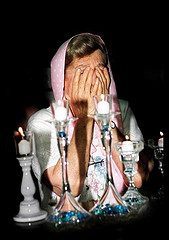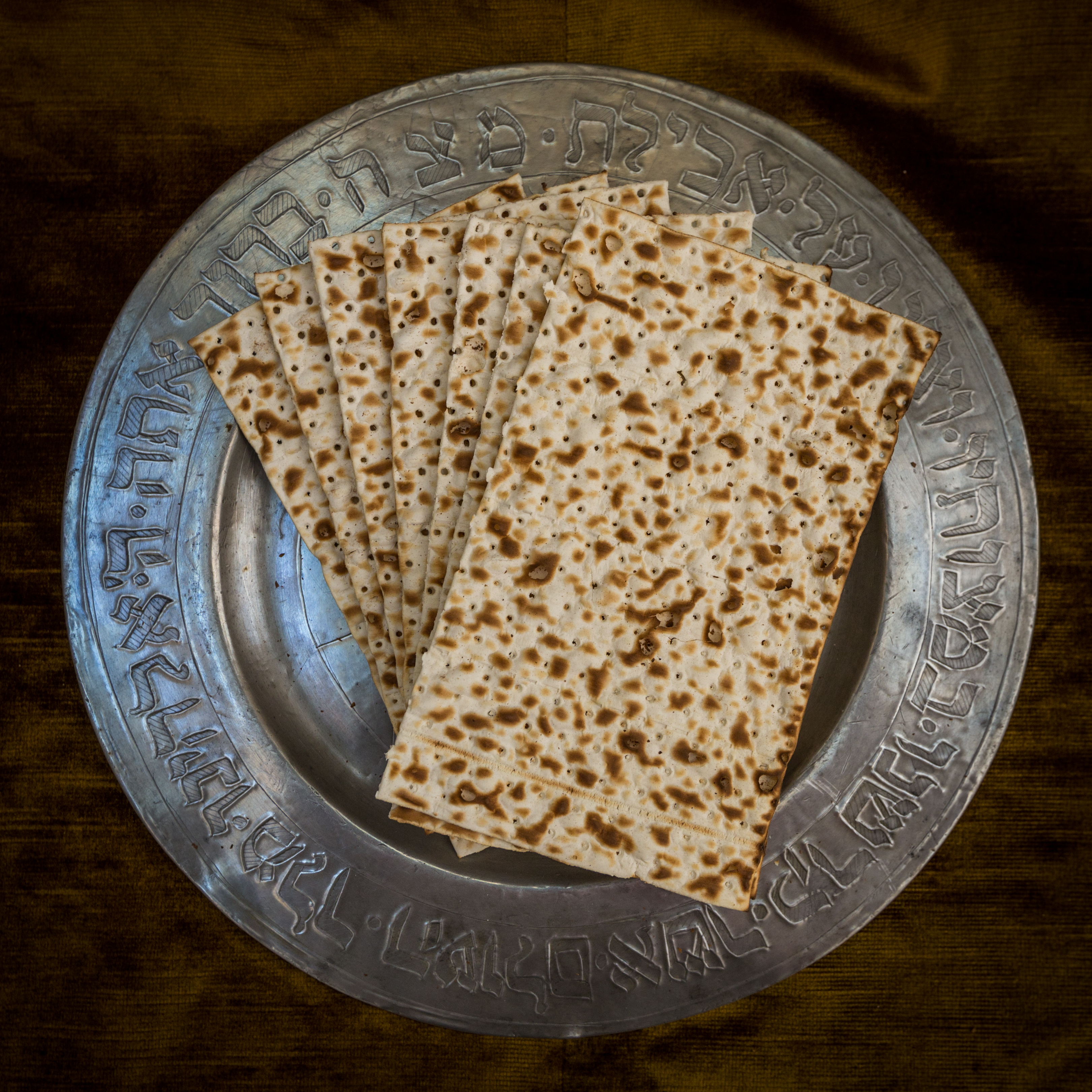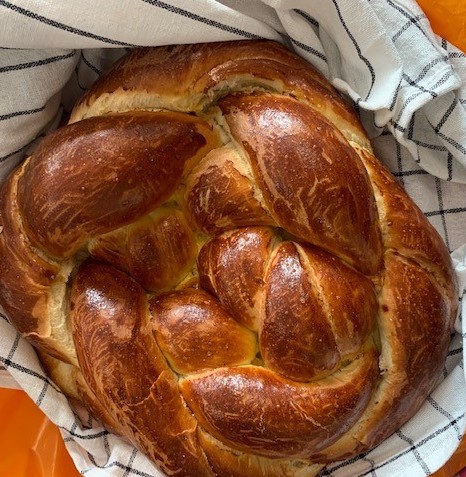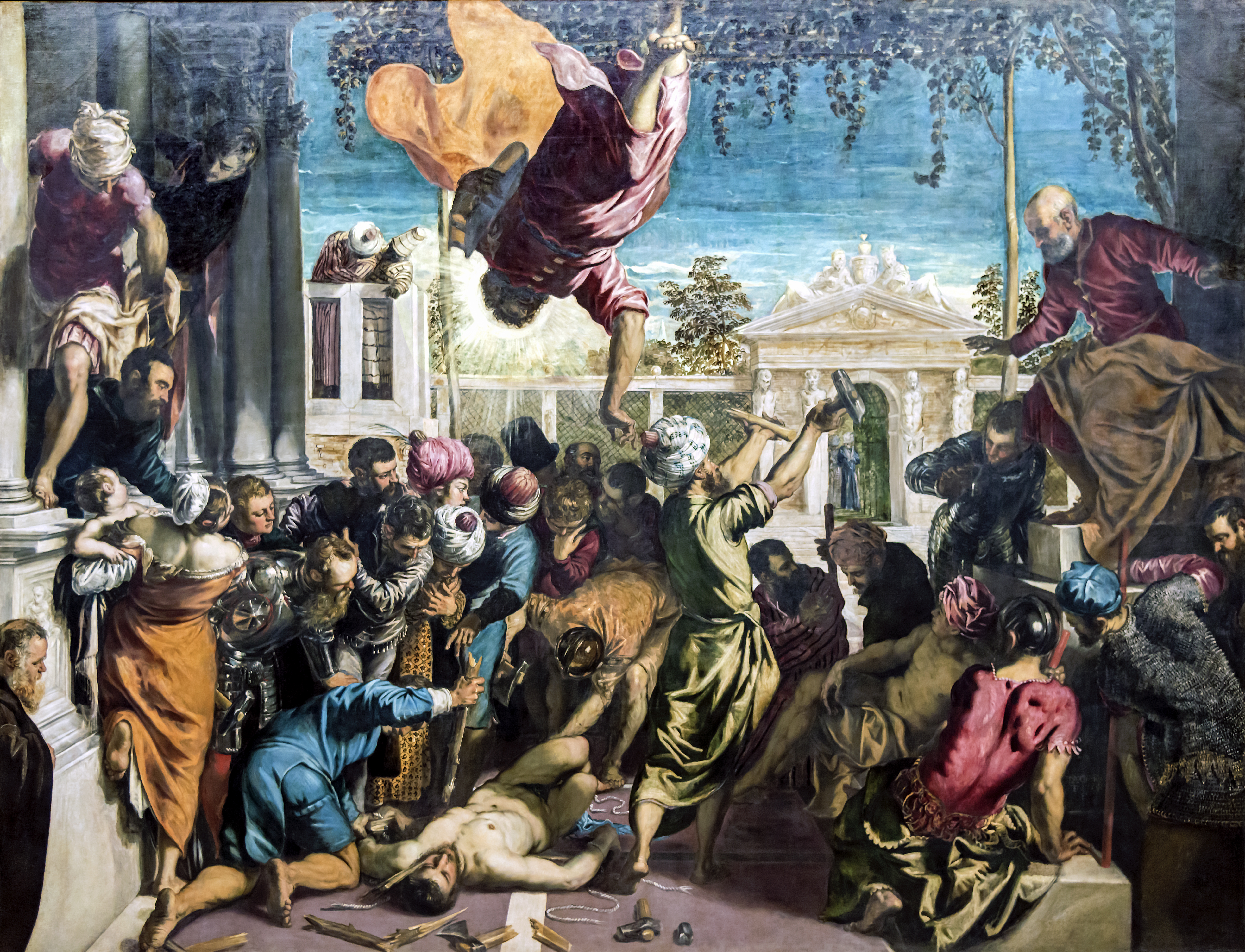|
Challah Cover
A challah cover is a special cloth used to cover the two braided loaves (challah) set out on the table at the beginning of an Ashkenazi Shabbat or Yom Tov meal. While its appearance lends a decorative and ceremonial aspect to the set table, its presence serves both a halakhic and symbolic function. Description Challah covers may be made from any kind of fabric or paper. They are often hand or machine-embroidered, painted, appliqued or tie-dyed. They are sometimes adorned with fringes interwoven with silver or gold thread. The challah cover must be large enough to cover two braided loaves without allowing the bread to be seen through the sides, and opaque enough so that the loaves cannot be seen through the fabric. Store-bought challah covers often bear the inscription לכבוד שבת קדש ("To honor the holy Shabbat") or לכבוד שבת ויום טוב ("To honor Shabbat and Yom Tov"). Halakhic function At the beginning of a Shabbat or holiday meal, a blessing (Kiddush) ... [...More Info...] [...Related Items...] OR: [Wikipedia] [Google] [Baidu] |
Shabbat Challos
Shabbat (, , or ; he, שַׁבָּת, Šabbāṯ, , ) or the Sabbath (), also called Shabbos (, ) by Ashkenazim, is Judaism's day of rest on the seventh day of the week—i.e., Saturday. On this day, religious Jews remember the biblical stories describing the creation of the heaven and earth in six days and the redemption from slavery and The Exodus from Egypt, and look forward to a future Messianic Age. Since the Jewish religious calendar counts days from sunset to sunset, Shabbat begins in the evening of what on the civil calendar is Friday. Shabbat observance entails refraining from work activities, often with great rigor, and engaging in restful activities to honour the day. Judaism's traditional position is that the unbroken seventh-day Shabbat originated among the Jewish people, as their first and most sacred institution. Variations upon Shabbat are widespread in Judaism and, with adaptations, throughout the Abrahamic and many other religions. According to ''halakha' ... [...More Info...] [...Related Items...] OR: [Wikipedia] [Google] [Baidu] |
Matzah Cover (5607454481)
Matzah or matzo ( he, מַצָּה, translit=maṣṣā'','' pl. matzot or Ashk. matzos) is an unleavened flatbread that is part of Jewish cuisine and forms an integral element of the Passover festival, during which ''chametz'' (leaven and five grains that, per Jewish Law, are self-leavening) is forbidden. As the Torah recounts, God commanded the Israelites (modernly, Jews and Samaritans) to eat only unleavened bread during the seven day Passover festival. Matzah can be either soft like a pita loaf or crispy. Only the crispy variety is produced commercially because soft matzah has a very short shelf life. Matzah meal is crispy matzah that has been ground to a flour-like consistency. Matzah meal is used to make matzah balls, the principal ingredient of matzah ball soup. Sephardic Jews typically cook with matzah itself rather than matzah meal. Matzah that is kosher for Passover is limited in Ashkenazi tradition to plain matzah made from flour and water. The flour may be who ... [...More Info...] [...Related Items...] OR: [Wikipedia] [Google] [Baidu] |
Matzos
Matzah or matzo ( he, מַצָּה, translit=maṣṣā'','' pl. matzot or Ashkenazi Hebrew, Ashk. matzos) is an Unleavened bread, unleavened flatbread that is part of Jewish cuisine and forms an integral element of the Passover festival, during which ''chametz'' (leaven and five grains that, per Jewish Law, are self-leavening) is forbidden. As the Torah recounts, God commanded the Israelites (modernly, Jews and Samaritans) to eat only unleavened bread during the seven day Passover festival. Matzah can be either soft like a pita loaf or crispy. Only the crispy variety is produced commercially because soft matzah has a very short shelf life. Matzah meal is crispy matzah that has been ground to a flour-like consistency. Matzah meal is used to make matzah balls, the principal ingredient of matzo ball soup, matzah ball soup. Sephardic Jews typically cook with matzah itself rather than matzah meal. Matzah that is kosher for Passover is limited in Ashkenazi tradition to plain matz ... [...More Info...] [...Related Items...] OR: [Wikipedia] [Google] [Baidu] |
Passover Seder
The Passover Seder (; he, סדר פסח , 'Passover order/arrangement'; yi, סדר ) is a ritual feast at the beginning of the Jewish holiday of Passover. It is conducted throughout the world on the eve of the 15th day of Nisan in the Hebrew calendar (i.e., at the start of the 15th; a Hebrew day begins at sunset). The day falls in late March or in April of the Gregorian calendar; Passover lasts for seven days in Israel and eight days outside Israel. Jews traditionally observe one seder if in Israel and two (one on each of the first two nights) if in the Jewish diaspora. The Seder is a ritual involving a retelling of the story of the liberation of the Israelites from slavery in ancient Egypt, taken from the Book of Exodus (''Shemot'') in the Jewish Torah. The Seder itself is based on the Biblical verse commanding Jews to retell the story of the Exodus from Egypt: "You shall tell your child on that day, saying, 'It is because of what the LORD did for me when I came out of ... [...More Info...] [...Related Items...] OR: [Wikipedia] [Google] [Baidu] |
Passover
Passover, also called Pesach (; ), is a major Jewish holiday that celebrates the Biblical story of the Israelites escape from slavery in Egypt, which occurs on the 15th day of the Hebrew month of Nisan, the first month of Aviv, or spring. The word ''Pesach'' or ''Passover'' can also refer to the Korban Pesach, the paschal lamb that was offered when the Temple in Jerusalem stood; to the Passover Seder, the ritual meal on Passover night; or to the Feast of Unleavened Bread. One of the biblically ordained Three Pilgrimage Festivals, Passover is traditionally celebrated in the Land of Israel for seven days and for eight days among many Jews in the Diaspora, based on the concept of . In the Bible, the seven-day holiday is known as Chag HaMatzot, the feast of unleavened bread (matzo). According to the Book of Exodus, God commanded Moses to tell the Israelites to mark a lamb's blood above their doors in order that the Angel of Death would pass over them (i.e., that they wou ... [...More Info...] [...Related Items...] OR: [Wikipedia] [Google] [Baidu] |
Kovno
Kaunas (; ; also see other names) is the second-largest city in Lithuania after Vilnius and an important centre of Lithuanian economic, academic, and cultural life. Kaunas was the largest city and the centre of a county in the Duchy of Trakai of the Grand Duchy of Lithuania and Trakai Palatinate since 1413. In the Russian Empire, it was the capital of the Kaunas Governorate from 1843 to 1915. During the interwar period, it served as the temporary capital of Lithuania, when Vilnius was seized and controlled by Poland between 1920 and 1939. During that period Kaunas was celebrated for its rich cultural and academic life, fashion, construction of countless Art Deco and Lithuanian National Romanticism architectural-style buildings as well as popular furniture, the interior design of the time, and a widespread café culture. The city interwar architecture is regarded as among the finest examples of European Art Deco and has received the European Heritage Label. It contribut ... [...More Info...] [...Related Items...] OR: [Wikipedia] [Google] [Baidu] |
Yisroel Salanter
Yisrael ben Ze'ev Wolf Lipkin, also known as "Israel Salanter" or "Yisroel Salanter" (November 3, 1809, Zhagory – February 2, 1883, Königsberg), was the father of the Musar movement in Orthodox Judaism and a famed Rosh yeshiva and Talmudist. The epithet ''Salanter'' was added to his name since most of his schooling took place in Salant (now the Lithuanian town of Salantai), where he came under the influence of Rabbi Yosef Zundel of Salant. He was the father of mathematician Yom Tov Lipman Lipkin. Biography Yisroel Lipkin was born in Zagare, Lithuania on November 3, 1809, the son of Zev Wolf, the rabbi of that town and later Av Beth Din of Goldingen and Telz, and his wife Leah. As a boy, he studied with Rabbi Tzvi Hirsh Braude of Salant. After his 1823 marriage to Esther Fega Eisenstein, daughter of Yenta and Yaakov HaLevi Eisenstein (died August 1871, Vilnius), Lipkin settled with her in Salant. There he continued his studies under Hirsch Broda and Zundel, himself a disc ... [...More Info...] [...Related Items...] OR: [Wikipedia] [Google] [Baidu] |
Talmud
The Talmud (; he, , Talmūḏ) is the central text of Rabbinic Judaism and the primary source of Jewish religious law ('' halakha'') and Jewish theology. Until the advent of modernity, in nearly all Jewish communities, the Talmud was the centerpiece of Jewish cultural life and was foundational to "all Jewish thought and aspirations", serving also as "the guide for the daily life" of Jews. The term ''Talmud'' normally refers to the collection of writings named specifically the Babylonian Talmud (), although there is also an earlier collection known as the Jerusalem Talmud (). It may also traditionally be called (), a Hebrew abbreviation of , or the "six orders" of the Mishnah. The Talmud has two components: the Mishnah (, 200 CE), a written compendium of the Oral Torah; and the Gemara (, 500 CE), an elucidation of the Mishnah and related Tannaitic writings that often ventures onto other subjects and expounds broadly on the Hebrew Bible. The term "Talmud" may refer to ... [...More Info...] [...Related Items...] OR: [Wikipedia] [Google] [Baidu] |
Challah Cover For Shabbat
Challah (, he, חַלָּה or ; plural: or ) is a special bread of Ashkenazi Jewish origin, usually braided and typically eaten on ceremonial occasions such as Shabbat and major Jewish holidays (other than Passover). Ritually acceptable challah is made of dough from which a small portion has been set aside as an offering. Challah may also refer to the dough offering. The word is biblical in origin, though originally referred only to the dough offering. Similar braided breads such as kalach and vánočka are found across Central and Eastern Europe. Name and origins The term in Biblical Hebrew meant a kind of loaf or cake. The Aramaic word given for its translation is (pl. ), and which word (var. syc, ܓܪܝܨܐ / ܓܪܝܣܐ) Payne Smith defines as "a cake or loaf," or "morsel of bread." In Hebrew, the word challah is derived from the root () which means “hollow,” “space” or “pierced.” In Rabbinic terminology, ''challah'' often refers to the portion of ... [...More Info...] [...Related Items...] OR: [Wikipedia] [Google] [Baidu] |
Tosafot
The Tosafot, Tosafos or Tosfot ( he, תוספות) are medieval commentaries on the Talmud. They take the form of critical and explanatory glosses, printed, in almost all Talmud editions, on the outer margin and opposite Rashi's notes. The authors of the Tosafot are known as Tosafists ( ''Ba'ale haTosafot''); for a listing see ''List of Tosafists''. Meaning of name The word ''tosafot'' literally means "additions". The reason for the title is a matter of dispute among modern scholars. Many of them, including Heinrich Graetz, think the glosses are so-called as additions to Rashi's commentary on the Talmud. In fact, the period of the Tosafot began immediately after Rashi had written his commentary; the first tosafists were Rashi's sons-in-law and grandsons, and the Tosafot consist mainly of strictures on Rashi's commentary. Others, especially Isaac Hirsch Weiss, object that many tosafot — particularly those of Isaiah di Trani — have no reference to Rashi. Weiss, f ... [...More Info...] [...Related Items...] OR: [Wikipedia] [Google] [Baidu] |
Miracle
A miracle is an event that is inexplicable by natural or scientific lawsOne dictionary define"Miracle"as: "A surprising and welcome event that is not explicable by natural or scientific laws and is therefore considered to be the work of a divine agency." and accordingly gets attributed to some supernatural or praeternatural cause. Various religions often attribute a phenomenon characterized as miraculous to the actions of a supernatural being, (especially) a deity, a magician, a miracle worker, a saint, or a religious leader. Informally, English-speakers often use the word ''miracle'' to characterise any beneficial event that is statistically unlikely but not contrary to the laws of nature, such as surviving a natural disaster, or simply a "wonderful" occurrence, regardless of likelihood (e.g. "the miracle of childbirth"). Some coincidences may be seen as miracles. A true miracle would, by definition, be a non-natural phenomenon, leading many writers to dismiss miracles ... [...More Info...] [...Related Items...] OR: [Wikipedia] [Google] [Baidu] |







.jpg)
